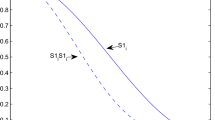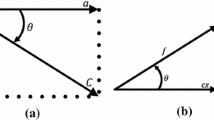Abstract
A neural network-based harmonic balance technique for the analysis of periodic responses of nonlinear circuits has been developed, which takes advantage of a special back propagation neural network to train the steady-state solutions to satisfy the governing equations of nonlinear circuits. The neural network consists of three layers, where the inputs are the discrete time points in one complete period, and the hidden layer is composed of trigonometric functions that represent different frequency components of the harmonics or the mixing products, and the output layer is made up of neurons representing the steady-state solutions of the circuit. The proposed method can avoid the time- and frequency-domain transformation during the iterations and converge from random generated starting values. Both single-tone and multi-tone excitations can be solved directly by using this method. Numerical simulations are preformed, and the accuracy is good according to the comparison of the simulated results with the commercial simulation software.












Similar content being viewed by others
References
C.K. Alexander, M.N.O. Sadiku, Fundamentals of Electric Circuits, 5th edn. (McGraw-Hill, New York, 2012)
M. Bozzi, L. Perregrini, A.R. Ruiz Laso, Analysis of MM-Wave nonlinear circuits by combining genetic algorithm and harmonic balance technique, in 2000 IEEE MTT-S International Microwave Symposium Digest (Cat. No. 00CH37017), vol 1 (2000), pp. 421–424
H.G. Brachtendorf, G. Welsch, R. Laur, Fast simulation of the steady-state of circuits by the harmonic balance technique. in Proceedings of ISCAS'95-International Symposium on Circuits and Systems(IEEE) (1995), pp. 1388–1391. https://doi.org/10.1007/978-3-642-32597-7_45
A. Brambilla, Multione signal harmonic balance menthod. Electron. Lett. 35, 1809–1810 (1999). https://doi.org/10.1049/el:19991241
M. Bucolo, A. Buscarino, C. Famoso et al., Imperfections in integrated devices allow the emergence of unexpected strange attractors in electronic circuits. IEEE Access. 9, 29573–29583 (2021). https://doi.org/10.1109/ACCESS.2021.3058506
L.-S. Chena, C.-H. Liub, H.-J. Chiua, A neural network based approach for sentiment classification in the blogosphere. J. Inform. 5, 313–322 (2011). https://doi.org/10.1016/j.joi.2011.01.003
W. Gautschi, Nmerical Analysis, 2nd edn. (Springer, Berlin, 2020)
J. Kacprzyk, Artificial Neural Network Modelling (Springer, Cham, 2016). https://doi.org/10.1007/978-3-319-28495-8
S.A. Maas, Nonlinear Microwave and RF Circuits, 2nd edn. (Artech house, New York, 2003)
M. Nakhla, J. Vlach, A piecewise harmonic balance technique for determination of periodic response of nonlinear systems. IEEE Trans. Circuits Syst. 23, 85–91 (1976). https://doi.org/10.1109/TCS.1976.1084181
J. Zhang, Y. Wang, X. Wang, A combination of piecewise harmonic balance technique and neural network for analyzing active antenna. IEEE Anten Propag. Soc. Int. Sympos. Digest. 1, 514–517 (1996)
Y. Zhang, D. Ye, Y. Liu, J. Xu. Incremental LLE based on back propagation neural network, in 2nd International Symposium on Resource Exploration and Environmental Science, vol 170 (2018), pp. 042051. https://doi.org/10.1088/1755-1315/170/4/042051
Author information
Authors and Affiliations
Corresponding author
Ethics declarations
Conflict of interest
The authors declare that they have no conflict of interest.
Data Availability
The datasets generated during and analyzed during the current study are available from the corresponding author on reasonable request.
Additional information
Publisher's Note
Springer Nature remains neutral with regard to jurisdictional claims in published maps and institutional affiliations.
Rights and permissions
Springer Nature or its licensor (e.g. a society or other partner) holds exclusive rights to this article under a publishing agreement with the author(s) or other rightsholder(s); author self-archiving of the accepted manuscript version of this article is solely governed by the terms of such publishing agreement and applicable law.
About this article
Cite this article
Ge, J., Sun, Y., Wen, Z. et al. A Neural Network-Based Harmonic Balance Technique for Analysis of Periodic Responses of Nonlinear Circuits. Circuits Syst Signal Process 42, 2589–2605 (2023). https://doi.org/10.1007/s00034-022-02271-5
Received:
Revised:
Accepted:
Published:
Issue Date:
DOI: https://doi.org/10.1007/s00034-022-02271-5




